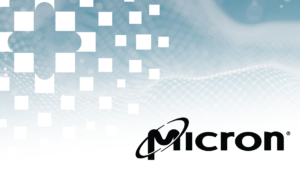Automotive Applications for Embedded Vision
Vision products in automotive applications can make us better and safer drivers
Vision products in automotive applications can serve to enhance the driving experience by making us better and safer drivers through both driver and road monitoring.
Driver monitoring applications use computer vision to ensure that driver remains alert and awake while operating the vehicle. These systems can monitor head movement and body language for indications that the driver is drowsy, thus posing a threat to others on the road. They can also monitor for driver distraction behaviors such as texting, eating, etc., responding with a friendly reminder that encourages the driver to focus on the road instead.
In addition to monitoring activities occurring inside the vehicle, exterior applications such as lane departure warning systems can use video with lane detection algorithms to recognize the lane markings and road edges and estimate the position of the car within the lane. The driver can then be warned in cases of unintentional lane departure. Solutions exist to read roadside warning signs and to alert the driver if they are not heeded, as well as for collision mitigation, blind spot detection, park and reverse assist, self-parking vehicles and event-data recording.
Eventually, this technology will to lead cars with self-driving capability; Google, for example, is already testing prototypes. However many automotive industry experts believe that the goal of vision in vehicles is not so much to eliminate the driving experience but to just to make it safer, at least in the near term.

Here’s Why the SDV Market Will Be Worth $700 Billion by 2034
The SDV and AI Cars market is set to be worth over US$700 billion by 2034, representing around 20% of the global car market, according to IDTechEx‘s “Software-Defined Vehicles, Connected Cars, and AI in Cars 2024-2034” report. That sum can be sourced from several areas, such as monthly connectivity subscriptions, commission from in-vehicle payments, and

North America and Europe to Account for 15 Million Video Telematics Systems In Use by 2028
For more information, visit https://www.berginsight.com/the-video-telematics-market. The integration of cameras to enable various video-based solutions in commercial vehicle environments is one of the most apparent trends in the fleet telematics sector today. Berg Insight’s definition of video telematics includes a broad range of camera-based solutions deployed in commercial vehicle fleets either as standalone applications or as

How Embedded Vision is Helping Build Smart Buses of the Future
This blog post was originally published at TechNexion’s website. It is reprinted here with the permission of TechNexion. The transportation sector has always been at the forefront of technological advancements, and the emergence of the “Smart Bus” system is a testament to this evolution. This innovative system is not just about enhancing the passenger experience

AI Chips and Chat GPT: Exploring AI and Robotics
AI chips can empower the intelligence of robotics, with future potential for smarter and more independent cars and robots. Alongside the uses of Chat GPT and chatting with robots at home, the potential for this technology to enhance working environments and reinvent socializing is promising. Cars that can judge the difference between people and signposts

Micron’s Full Suite of Automotive-grade Solutions Qualified for Qualcomm Automotive Platforms to Power AI in Vehicles
Micron’s automotive memory and storage enable central compute, digital cockpit and advanced driver-assistance systems for Qualcomm customers NUREMBERG, Germany, April 10, 2024 (GLOBE NEWSWIRE) — Embedded World — Micron Technology, Inc. (Nasdaq: MU), today announced that it has qualified a full suite of its automotive-grade memory and storage solutions for Qualcomm Technologies Inc.’s Snapdragon® Digital Chassis™,

Unlocking Tomorrow’s Vision: Exploring Lidar Technology Trends in 2024
As autonomous driving continues to revolutionize the automotive industry, sensor technologies have undergone unprecedented advancements. One innovation standing out is Light Detection and Ranging (Lidar). Utilizing laser light to measure distances and create precise 3D maps of surroundings, Lidar has emerged as a game-changer in perception capabilities, especially for the automotive industry. With roots tracing

Driving Towards Growth: A $14.3 Billion Automotive Sensor Market Opportunity by 2029
This market research report was originally published at the Yole Group’s website. It is reprinted here with the permission of the Yole Group. The convergence of two automotive megatrends, electrification and ADAS, is fueling the sensors market. OUTLINE Sensors for electrification and ADAS both show remarkably strong growth in revenue between 2019 and 2029, with

Efinix Rolls Out Line of FPGAs to Accelerate and Adapt Automotive Designs and Applications
Designed to deliver the power behind the promise of the software defined vehicle, Efinix FPGAs uniquely positioned to drive modern vehicles forward March 25, 2024 12:01 AM Eastern Daylight Time–CUPERTINO, Calif.–(BUSINESS WIRE)–Efinix®, an innovator in programmable logic solutions, today announced a line of FPGA solutions designed specifically for the automotive industry to drive forward the

The Integration of DMS and OMS Offers Advancements for In-cabin Monitoring
The Global In-Cabin Sensing Market Will Exceed US$8.5 Billion by 2034 In-cabin monitoring, comprising both Driver Monitoring System (DMS) and Occupancy Monitoring System (OMS), has experienced significant growth since the start of 2024. Traditionally, DMS relies on 2D infrared cameras, while OMS utilizes 3D sensing modules like 3D time-of-flight (ToF) cameras or radar modules. At

indie Semiconductor Announces Strategic Investment in AI Processor Leader Expedera
Partnership Capitalizes on Expedera’s Breakthrough AI Capabilities in Support of indie’s ADAS Portfolio Leverages indie’s Multi-modal Sensing Technology and Expedera’s Scalable NPU IP Yields Class-leading Edge AI Performance at Ultra-low Power and Low Latency March 20, 2024 04:05 PM Eastern Daylight Time–ALISO VIEJO, Calif. & SANTA CLARA, Calif.–(BUSINESS WIRE)–indie Semiconductor, Inc. (Nasdaq: INDI), an Autotech

